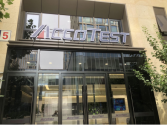So will TSMC Arizona FAB be finished by 2024? have it received Federal subsidies it was promise for? Intel the favored son hadn't experience such difficulties...lol
Chip makers are refusing to build new semiconductor plants in the U.S. unless Congress unlocks $52 billion in funding
BY
June 28, 2022 2:13 PM GMT+8
GlobalWafers’ $5 billion chip factory depends on Congress funding the CHIPS Act, U.S. Commerce Secretary Gina Raimondo says.TING SHEN—BLOOMBERG/GETTY IMAGES
The world’s third-largest maker of semiconductor wafers, Taiwan’s GlobalWafers,
$5 billion factory in the U.S. on Monday—but only if the government helps pay for it.
“This investment that they’re making is contingent upon Congress passing the CHIPS Act. The [GlobalWafers] CEO told me that herself, and they reiterated that today,” U.S. Commerce Secretary Gina Raimondo told CNBC, the same day GlobalWafers announced its development plan.
Congress actually
the CHIPS Act, which proposed $52 billion in
for local players to invest in the domestic chip industry, in January 2021 as part of that year’s National Defense Authorization Act—an annual bill designed to provide guidance on policies and funding for the year. But, over a year later, Congress has yet to formally allocate any budget to finance the bill.
“It has to be done before [Congress goes] to August recess. I don’t know how to say it any more plainly. [The GlobalWafers] deal…will go away, I think, if Congress doesn’t act,” Raimondo told CNBC.
The CHIPS Act is intended to shore up America’s flagging chip industry as a hedge against China’s accelerated development of its own semiconductor capabilities and shift global production away from China’s shores. The majority of global semiconductor manufacturing is
, an independent island that Beijing claims sovereignty over.
Never miss a story about semiconductors
Technically, the CHIPS Act is supposed to support domestic companies—not foreign companies investing in America. But last December the U.S.-based semiconductor industry organization SEMI
Congress to open CHIPS funding for all companies investing in the U.S.
Taiwan’s GlobalWafers, which has proposed building its new plant in Texas, isn’t the only chip industry manufacturer that has conditioned its investment in the U.S. on government funding.
In 2020,
Manufacturing Corp. (TSMC), the world’s largest contract chip manufacturer, announced plans for a $12 billion plant in Phoenix to produce its most advanced chips. But TSMC CEO Mark Liu
development would go ahead only if the government could “make up TSMC’s running costs difference between the United States and Taiwan.”
The State of Arizona
at least $200 million in public infrastructure funding to support TSMC’s factory operations in Phoenix, including spending on roads and sewage systems. In June, TSMC
construction of its Arizona fab, which is ongoing, was proving to be more costly than the company anticipated and called for Washington to extend CHIPS support to foreign firms.
Of course, domestic players want the government to help subsidize their own expansions in the U.S., too. Last week,
put a
on construction of its latest $20 billion factory in Ohio and postponed its groundbreaking ceremony indefinitely—or until Congress funds the CHIPS Act.
“Unfortunately, CHIPS Act funding has moved more slowly than we expected, and we still don’t know when it will get done,” Intel spokesperson Will Moss told the
, calling on Congress to act so Intel “can move forward at the speed and scale we have long envisioned for Ohio.”



